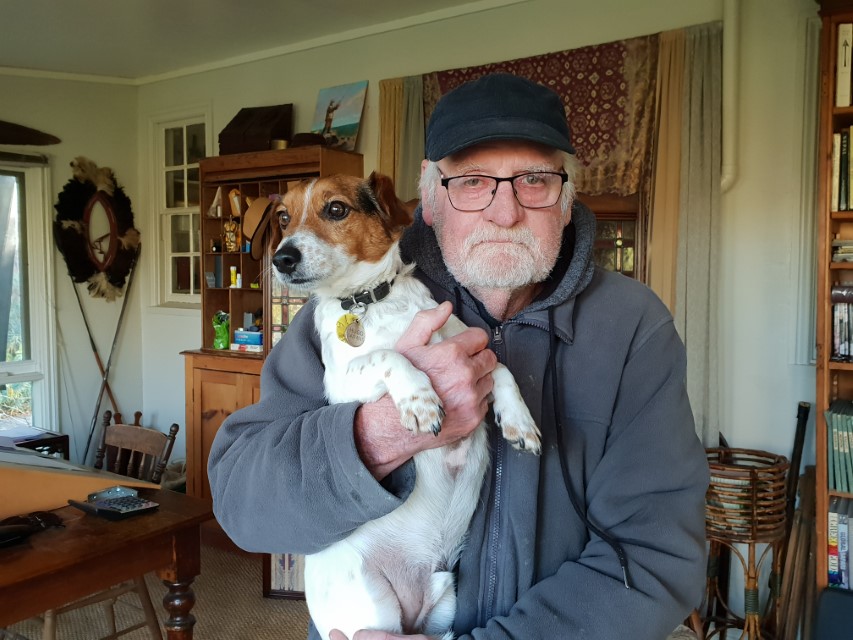With the Australian film industry on coronavirus pause and even Hollywood hanging up the slate, Kyneton set designer Leslie Binns is finding work as an illustrator until his film work returns.
The talented art director has more than 40 feature film credits to his name including Healing and Moby Dick, and three of his film and television miniseries projects have graced the Macedon Ranges and surrounding areas.
Miniseries Anzacs (1985) features scenes from Gisborne and Bullengarook, and Eureka Stockade (1984) in Bullengarook with an engineered explosion so hot it melted the camera, but, perhaps the most memorable for Kyneton locals was Healing (2014). Healing was based on the true story of a low security prison in Gippsland. It was shot at Campaspe Downs and involved close work with raptors from Healesville Sanctuary.
“We needed a bush background. The huts built through the gum trees were terrific and that area became Won Wron Correctional Centre prison in the story,” Les said.
The crew filled out the B&Bs in and around Kyneton during weekdays, shopping and dining in the local area. A later local screening of the film attracted 400 people and helped raise funds for Macedon Ranges Council’s youth mental health initiative Live4Life.
Stephen King’s eerie Salom’s Lot was also shot not far from home at Mernda in the mid-2000s. Les built the iconic aged three-storey house and redressed the main street of Creswick as an American town, covered in snow to create the ultimate chilling look.
The house was so convincing, Les was approached by the local council who asked if he had a permit for a sewerage connection. They were shocked upon closer inspection to find the house had just three sides and was all scaffolding inside!
Les has always had a creative mind and was drawn to film shortly after completing his degree in commercial art in the 1960s.
“I was working as an artist in Sydney and got sick of drawing toothpaste tubes and cars,” he said.
It was art director Eric Thompson who gave Leslie his first big break in the film industry in the late 1960s and he went on to become a production designer.
He worked on many projects like Aussie favourite Skippy before he joined Crawford Productions’ art department in Melbourne.
He worked on the company’s first feature film The Hands of Cormac Joyce for the Hallmark Hall of Fame, and continued creating for Hallmark.
Les spread his wings as a freelance production designer where he picked up work on films including Robinson Crusoe (1997) with Pearce Brosnan in Papua New Guinea.
It wasn’t unusual for Les to travel for work to locations like America, London and other parts of Europe, and he had three films in Africa.
“Working in Nairobi, I got sick of living out of hotels, so I spent my time with the Maasai people. I really enjoyed it…but I couldn’t drink the blood and guts milk,” he said.
He became so close to the Maasai people that he helped them establish a village and was made a Maasai elder for life: a rare honour for a foreigner, and distinct from the other achievements that adorn his studio walls.
Les has been made an Australian Cinema Pioneer for his industry contribution and was nominated for a Primetime Emmy as production designer for Moby Dick (1998) – credited as one of his biggest challenges to date.
“It was a big job – a massive job!” he corrected.
“They tried to start it in London, shooting in the studios, but they got nowhere: you can’t build a sailing ship in the studio. It doesn’t look right.
“So, at Point Cook, I put in a big reflection pond – a lake – with a spillway wall and we built the ship in the lake. We wanted wind and water and we had wave machines. We never left that tank.”
It took Les 16 weeks to bring to life the Pequod – Herman Melville’s fictional 19th-century Nantucket whaling ship from the 1851 novel. Les also needed to construct much of the featured whaling town and, not to spoil the magic, also the whale’s tail.
His brilliant creative mind was behind the set stunning sets of Home Alone 4, design behind Crocodile Dundee in Los Angeles (2001), The Man from Snowy River and the scenes and flood from Noah’s Ark (1999).
Still actively contributing to film and commissioned illustration work, Les has lived in Kyneton for the past 20 years where he says he enjoys “the freedom, fresh air and surroundings”.
Les is now working on two major projects and teases that one may make its way to Macedon Ranges.
RELATED: The district captured for the screen















